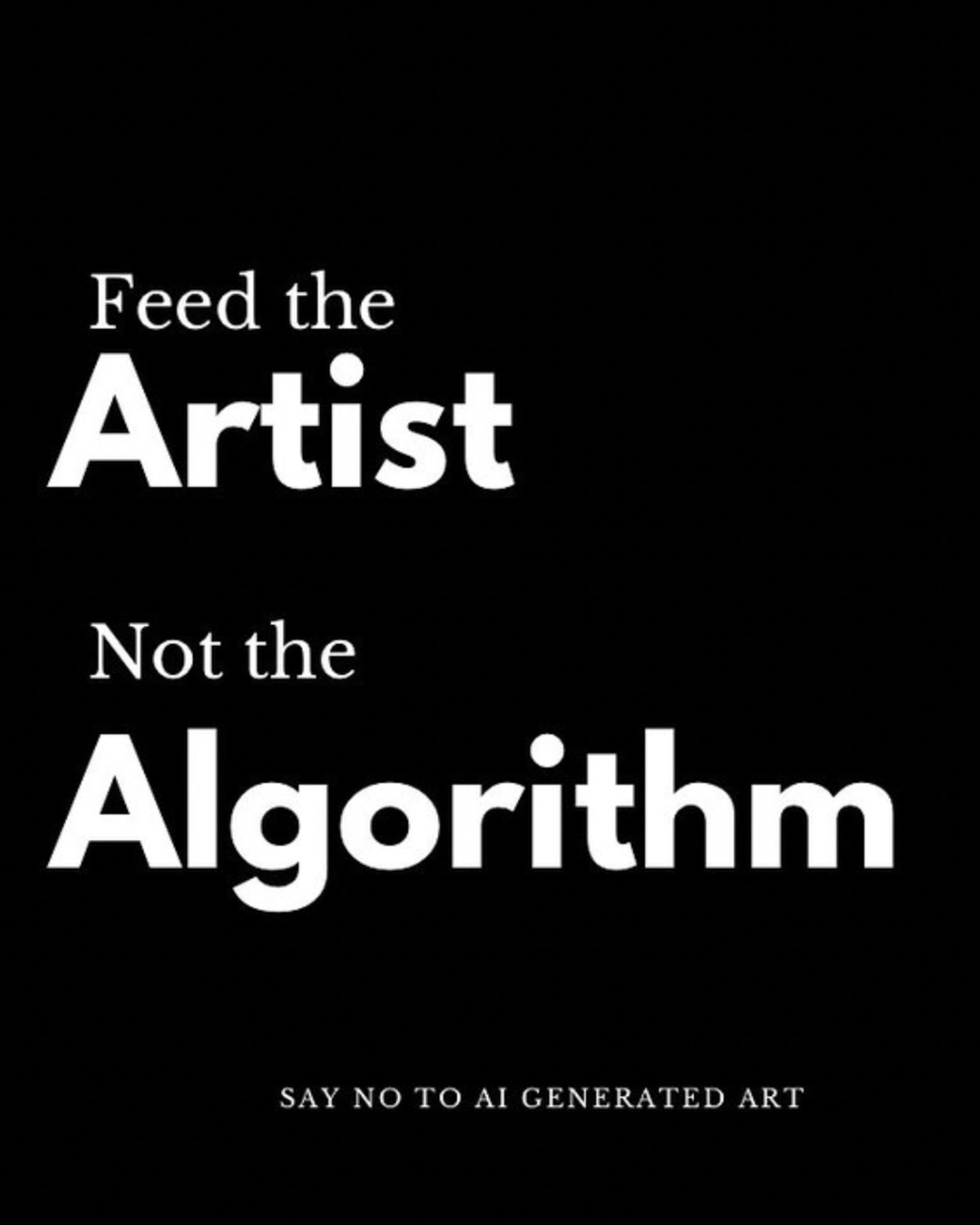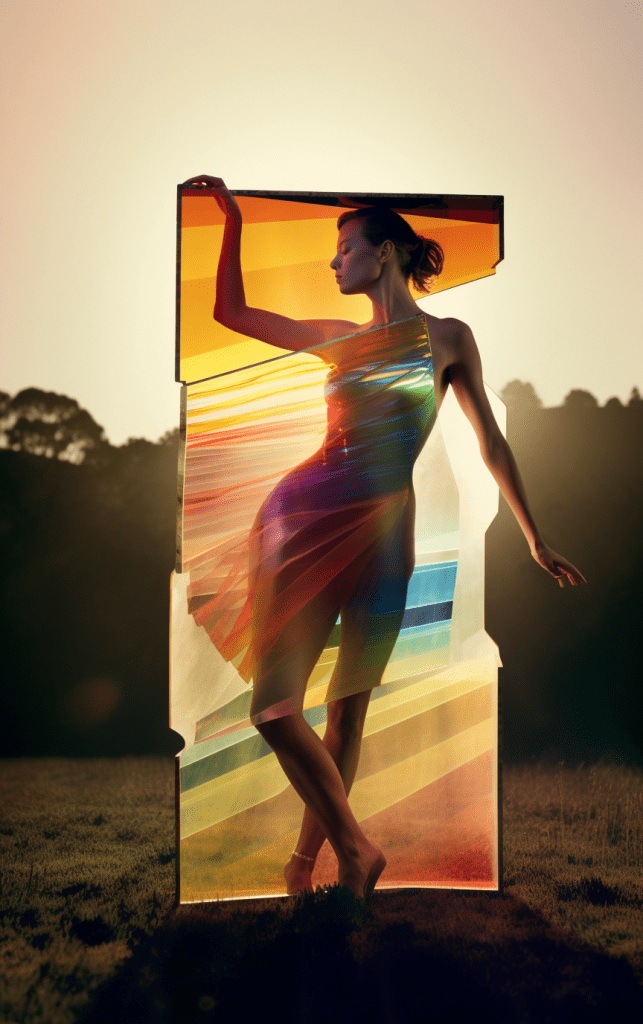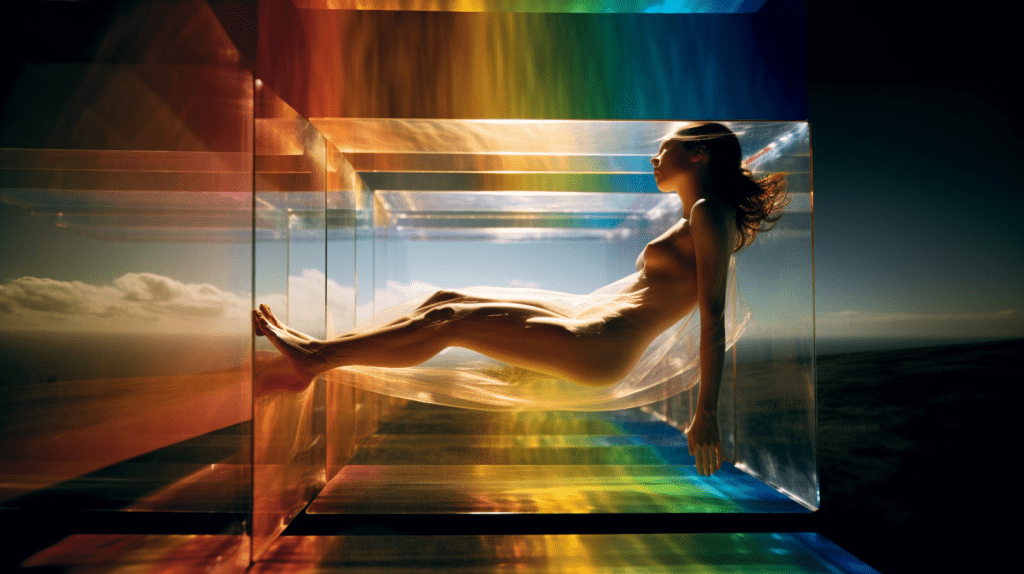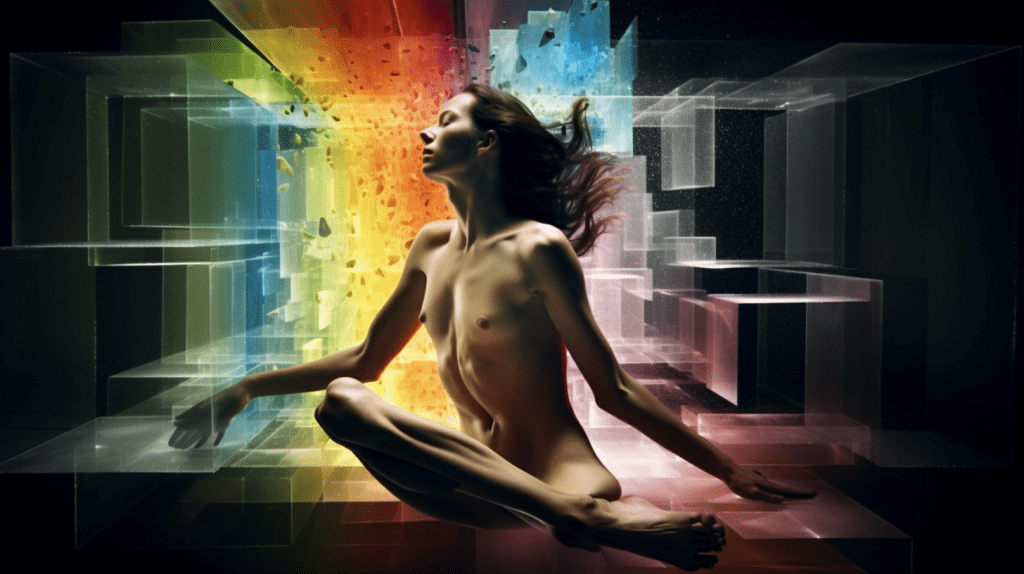
11 Feb AI – the ethical dilema
Prompt-based AI art generators are a new technology that is threatening the livelihoods of traditional artists?
AI & The Ethical Concerns of Artists…
As we focus on enhancing AI’s ability to differentiate between content that aligns with community standards and its limitations in interpreting context, there is another emerging type of AI that poses a threat to artists’ livelihoods: AI art generators that operate based on prompts.
Programmes designed to create digital artworks in mere seconds based on the user’s prompts. Those are trained on copyrighted images without the original creator’s consent, I even found my own work taken without the consent in the Midjourney library.
In the past, creating art demanded proficiency, mastery, and investment of time, whereas nowadays, individuals with an adequate lexicon can simply access a website and utilize keywords to produce a supposedly “unique” artwork within a matter of mere seconds.
“By being willing to be a bad artist, you have a chance to be an artist, and perhaps, over time, a very good one.“ – Julie Cameron

Although the technology behind prompt-based AI art generators has become more accessible to the general public in recent years, its ethical implications have come under scrutiny. With the ability to generate an image in seconds based on a simple prompt like “starry field with flowers”, many are concerned that these programs pose a threat to artists who have spent years developing a unique style. The option to request “art in the style of…” could potentially undermine the livelihoods of these artists.

The technology behind the AI-generated images “draws inspiration” from works painstakingly created by human hands and minds. Works from unknowns posted on social media are fed into databases alongside the works of old masters and modern “geniuses”. Information and data gathered without protection or permission. Artists have had their work unknowingly entered into databases without consent and in many cases without the option to opt out.
This brings into question:
What impact will AI art have on the art market and traditional artists:
Will companies forgo graphic designers and use AI to create their logos, media and presentations?
Will people no longer commision an artist, instead prompting a programme to produce work in their style?
To what extent can AI-generated art be considered original or creative?
Who is responsible for AI-generated art and who owns it?
Will AI-generated art reflect the biases of its creators and perpetuate existing inequalities?
At the point of writing this article, there are three main publicly available AI text-to-image generators: DALL-E2, Midjourney and Stable Diffusion, with more on the horizon.
Stable Diffusion is the only one among the three main companies that has been open about how it trained its AI. They have claimed that they did not gather the images themselves from the internet, but instead used Common Crawl, a non-profit organisation that provides unrestricted access to its web crawl containing billions of web pages each month. These pages contain images created by individuals who have not been given the option to choose whether or not to participate, which effectively disregards copyright laws.. It is speculated that DALL-E2 and Midjourney use the same underlying technology and databases as Stable Diffusion.
It is these issues surrounding consent that have led platforms like ArtStation to ban AI-generated work entirely. Two of the US’s biggest Anime conventions have banned AI generated art as have multiple artists and editors working in the comic industry.
“I’ll say this now; if you submit AI art to me in an attempt to get work and I find out, I’ll do everything in my power to make sure you’re blackballed from the comics industry. There’s no room for frauds in this industry” – Jon Moissan, Acquisitions Editor BOOM! Studios on Twitter 15 December 2022

Advocates for the AI-art generators propose that they will enable artists to rapidly produce prototypes for clients before starting themselves, and allow new ways to create and become more efficient. However, any profession that requires creativity and artistic talent is under threat from a technology that can only grow in its ability to accurately fulfil prompts as users become more aware of the programme and make more requests.
The impact of AI-generated art on artists’ income is already evident, with Botto – an AI art generator – producing a staggering 350 new images per week. These images are shared and voted on, eventually being converted into NFTs and auctioned off, with total sales nearing USD$1 million. This represents a significant loss of potential income for artists. In December 2022, Midjourney was used to create a children’s book over a single weekend, generating 13 illustrations that would typically have been hand-drawn by an illustrator. The computer program was trained on other artists’ works, and the resulting book is now available on Amazon.
AI-generated art is also being entered into digital art competitions where the competition creators haven’t had time to review and define their rules around the eligibility of work created by mashing up the work of millions of artists. Questions should be asked about the fairness of judging AI-generated images against the work of artists that have had to evolve their skills and techniques and vision over hours, months and years.
Competitions such as the Beautiful Bizarre Art Prize have chosen to ban the entry of AI-generated art in fairness to creators, while others have yet to make firm decisions. Without clarity, the odds are stacked against individual artists in favour of a machine-generated piece of art.
“We all use images around us knowingly or not as inspiration in our own creations. The difference is AI generated art ‘samples’ artworks rather than interpreting them… these programs are beaching artists’ copyright, use art that’s shared by the artist anywhere online to ‘train’ their algorithm” – Doris Rose
Ownership of AI-generated art is another area lacking clarity. Traditionally the creator of a piece has had the right to reproduce, distribute, display, or create derivative works based on the original. They could grant or deny these rights to others. Something that has been ripped away by the databases feeding and teaching these AIs.
The right of ownership when an image is created through an AI is significantly less clear than in traditional art forms, with most copyright laws not covering AI-generated images.
Who owns the creations made through these algorithms? The prompt giver? The AI itself? The team or person behind the AI art generator?
Midjourney’s teams allow others to use and remix your images and restrict you from selling or making money from them unless you are a paid account owner. Stable Diffusion claims no rights provided the image content is not illegal or harmful while DALL-E terms are unclear There is no legal precedent for the copyright or ownership of images created by AI further allowing the exploitation of the creators’ work who has been the building blocks for these generators.
Another consideration that must be addressed is the biases inherent to the imagery created through AI-generated art. Lensa, an AI app that trended on TikTok, lightened black skin, made users thinner and generated hyper-sexualised and semi-nude results for many women despite using fully clothed selfies.
“The app not only generates nudes but also ascribes cartoonishly sexualised features, like sultry poses and gigantic breasts, to their images. I, for example, received several fully nude results despite uploading only headshots” – Olivia Snow
The move towards white features and sexualised females aren’t the only biases present in AI art generators. In the case of DALL-E, the training data has been filtered to reduce violent or sexual imagery which inadvertently resulted in fewer women being created, something telling of the portrayal of women through history. Stable Diffusion has no restrictions on the type of content users can generate, including sexual or violent images, leading to the risk of deep fakes and revenge porn. Prompts to generate people through history from different cultures and regions are often seen to have predominately white features, reducing the visibility of different cultures and races in art.
DeviantArt has attempted to address some of the issues inherent to AI-generated art by launching its own AI-image generator called DreamUp. Based on the Stability AI program, it plans to limit direct and intentional copying by giving artists on the platform the ability to opt out of having their art crawled. However, this may be a case of too little, too late with data from millions of artists already crawled without their permission or knowledge.
While still in its infancy the potential impact AI-generated art can have on artists, and the arts is massive. In January 2023, three artists filed a copyright infringement lawsuit against Stability AI, Midjourney and DeviantArt for infringing on the rights of millions of artists without consent. Stability AI is also being sued by Getty Images for using its images in their training data. The decision of these lawsuits will have a profound effect on the impact of AI-generated art.
”Artistic practice, as with medicine, is a human endeavor, based ultimately on person-to-person communication. AI will permanently complicate that dynamic. Can a computer make artwork that expresses and teaches the human experience? It’s not a dig at technology in art, it’s the ethics.” – Sam Anderson Ramos, MFA
Often we focus on the benefits technology has, and there are many. However, when it comes to the arts we also need to question if the costs are starting to outweigh the gains.
Text inspired by VICKI FOX



No Comments